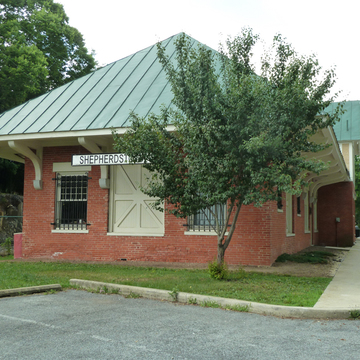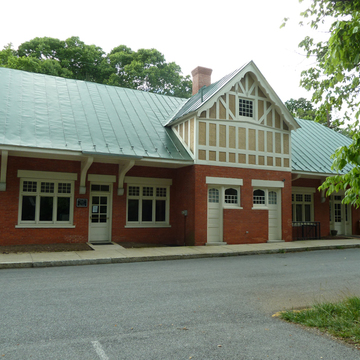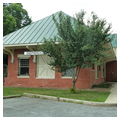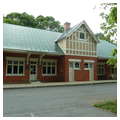If this railroad station is evidence, Shepherdstown once had great expectations of becoming a major transportation center. The long, low building is covered with a hipped roof, supported by heavy brackets, that extends far beyond the pressed brick walls. At the midpoint of the long walls, gable ends project from the rectangular mass to form a second story where half-timbered walls and elaborate bargeboards give a modest Tudor flavor. Inside, separate waiting rooms were provided for blacks and whites. The station agent proudly informed readers of the Shepherdstown Register that they were “furnished alike with toilet rooms on the inside for ladies and on the outside for men.” Because smoking was not allowed inside, the supervisor hoped that “gentlemen [would] save themselves and the agent embarrassment by leaving their cigars, etc., on the outside.” Customers using a different form of tobacco could, however, expectorate into “cuspidors conveniently placed in the rooms.” The Norfolk and Western Railway built stations based on the same plan in Williamson, West Virginia, and in Abingdon and Luray, Virginia.
After the last train stopped in 1957, the station sat vacant for a number of years. In 1996 the Norfolk-Southern Railroad, successor to the Norfolk & Western, deeded the building to Shepherdstown for $1. It has subsequently been restored and serves once again as a railroad station.




